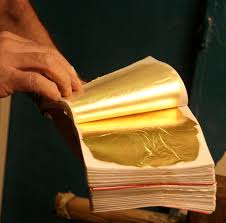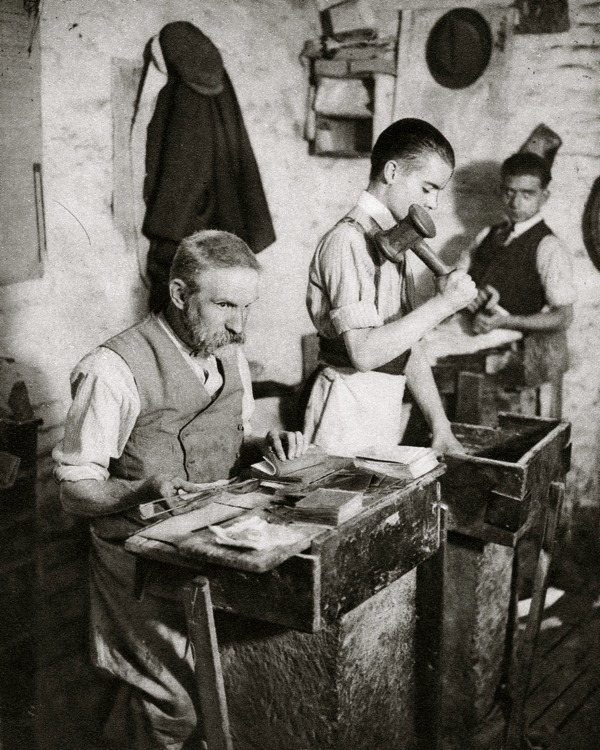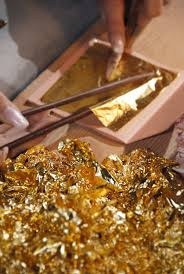
Artisans used the Gold Beating for thousands of years to gild works of art. This practice began over 5000 years ago when the Egyptian artisans discovered gold’s extraordinary malleability and durability. They became the first gold beaters and gilders in the world.
These Egyptians pounded gold with round stones to create the thinnest leaf they could make. Soon enough, using a cast iron hammer and some other pieces of equipment became the norm. These tools and methods have largely remained unchanged for many thousands of years.

It’s more common for gold beaters to make 22 karat leaf. The karat and the colour variations as it’s largely dependent on the composition of the mixture. The gold could be mixed with either silver or copper. The gold and its mixture were poured into a crucible and melted in the fire.

The melted mixture was then poured into a mould to cast into a bar, and the bar was repeatedly put in a rolling mill. The rollers were continually adjusted closet whenever the bar was put in till it became 25 micrometres.
The gold looks like a ribbon and into one-inch squares. The cutch is the first step in the beating process, which involves about 150 skins. The Mylar is used to interleave the gold as it is being beaten. The cutch is wrapped in numerous bands of parchments to hold it together during the beating.

The gold is then placed on a large and robust block of granite, and for one hour by hand, the goldbeater using a fifteen-pound hammer sets up a rhythm and follows a pattern, striking up to seventy times a minute. The parchment is continuously rotated, so the gold inside expands evenly.
Gold Beating demanded hours of monotonous and back-breaking work, but it has resulted in the most delicate artefacts. The ancient Egyptians were the first to work gold, and one gram of gold can produce a leaf measuring 10 square feet.
